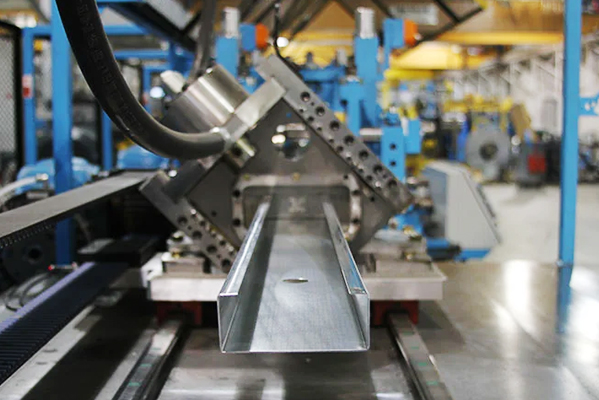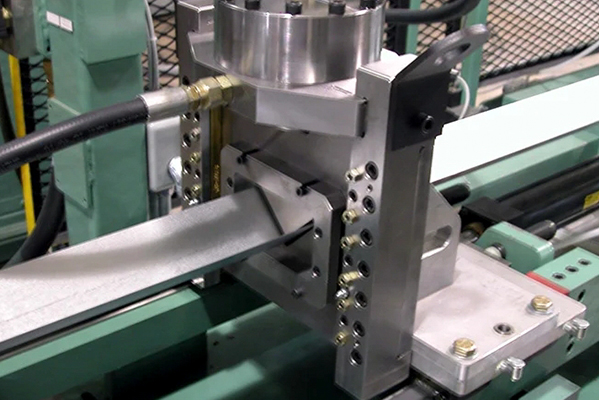Navigation Menu
Contact Us
- Email:
- info@wxavatar.com
- Address:
- Yurong Village, Yuqi Street, Huishan District, Wuxi, China.
Release Date:Mar 27, 2025 Visit:51 Source:Roll Forming Machine Factory
In the ever-evolving construction industry, steel framing systems have emerged as a cornerstone of modern building techniques. Offering unparalleled strength, flexibility, and sustainability, these systems rely on specialized equipment to transform raw steel into robust structural frameworks. This article explores the fundamentals of steel framing system equipment, its components, applications, and the advantages it brings to contemporary construction projects.
1. What is a Steel Framing System?
A steel framing system refers to a structural framework composed of steel components such as beams, columns, and studs, which form the skeleton of buildings. Unlike traditional wood framing, steel framing systems are engineered for precision, durability, and resistance to environmental challenges like fire, pests, and moisture. The equipment used in these systems plays a pivotal role in fabricating, assembling, and installing steel components efficiently.
2. Key Equipment in Steel Framing Systems
The creation of steel structures relies on a suite of advanced machinery and tools, including:
a. Roll Forming Machines
Function: These machines shape steel coils into precise profiles (e.g., C-sections, U-channels) through a cold-forming process.
Importance: They ensure uniformity in studs, tracks, and joists, critical for load-bearing walls and floors.

b. Cutting and Punching Equipment
Laser Cutters: Deliver high-precision cuts for complex steel components.
Punch Presses: Create holes for utilities (electrical, plumbing) or fastening points in steel studs.
c. Automated Framing Systems
Robotic Arms: Programmed to assemble prefabricated wall panels, reducing labor and errors.
CAD/CAM Software: Integrates with machinery to convert digital blueprints into physical components.
d. Fastening Tools
Self-Drilling Screw Guns: Secure steel-to-steel or steel-to-other-material connections.
Riveters and Welding Equipment: Used for heavy-duty joints in industrial settings.
e. Lifting and Installation Equipment
Cranes and Hoists: Handle heavy steel beams during assembly.
Alignment Tools: Ensure structural components meet exact design specifications.
3. Applications of Steel Framing Systems
Steel framing equipment supports diverse construction projects:
Commercial Buildings: High-rises, offices, and retail spaces benefit from steel’s strength-to-weight ratio.
Residential Housing: Light-gauge steel (LGS) framing enables faster, termite-proof home construction.
Industrial Facilities: Warehouses and factories leverage steel’s ability to span large areas without columns.
Disaster-Resistant Structures: Steel frames are ideal for earthquake- and hurricane-prone regions.
4. Advantages of Steel Framing Equipment
Speed and Efficiency: Prefabrication reduces on-site construction time by up to 50%.
Sustainability: Steel is 100% recyclable, aligning with green building certifications like LEED.
Precision: Computer-controlled machinery minimizes material waste.
Durability: Steel structures resist warping, rot, and fire, lowering long-term maintenance costs.
5. Challenges and Innovations
While steel framing systems offer numerous benefits, challenges include higher upfront costs and the need for skilled labor. However, advancements such as 3D modeling integration and lightweight composite materials are addressing these issues. Innovations like modular steel framing and AI-driven design optimization are pushing the boundaries of what’s possible in construction.

6. The Future of Steel Framing
As urbanization accelerates and sustainable practices gain urgency, steel framing systems are poised to dominate the construction landscape. Emerging trends include:
Smart Factories: Fully automated production lines for steel components.
Hybrid Systems: Combining steel with timber or concrete for hybrid structural solutions.
Energy-Efficient Designs: Steel frames integrated with insulation and solar panels.
Conclusion
Steel framing system equipment represents the fusion of engineering excellence and technological innovation. By enabling faster, stronger, and greener construction, these systems are redefining the built environment. As the industry continues to embrace automation and sustainability, steel framing will remain at the forefront of architectural progress, shaping skylines and communities for generations to come.